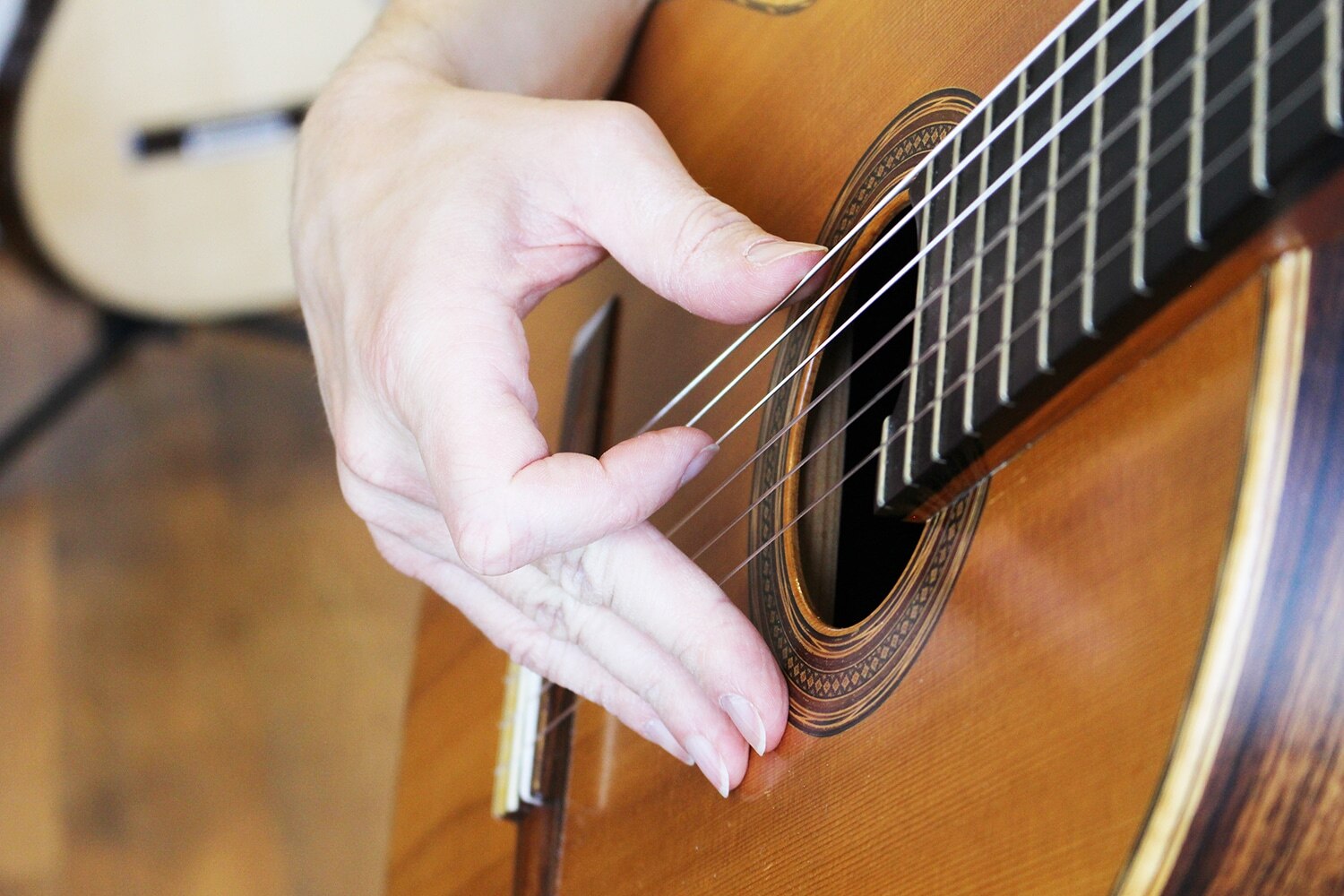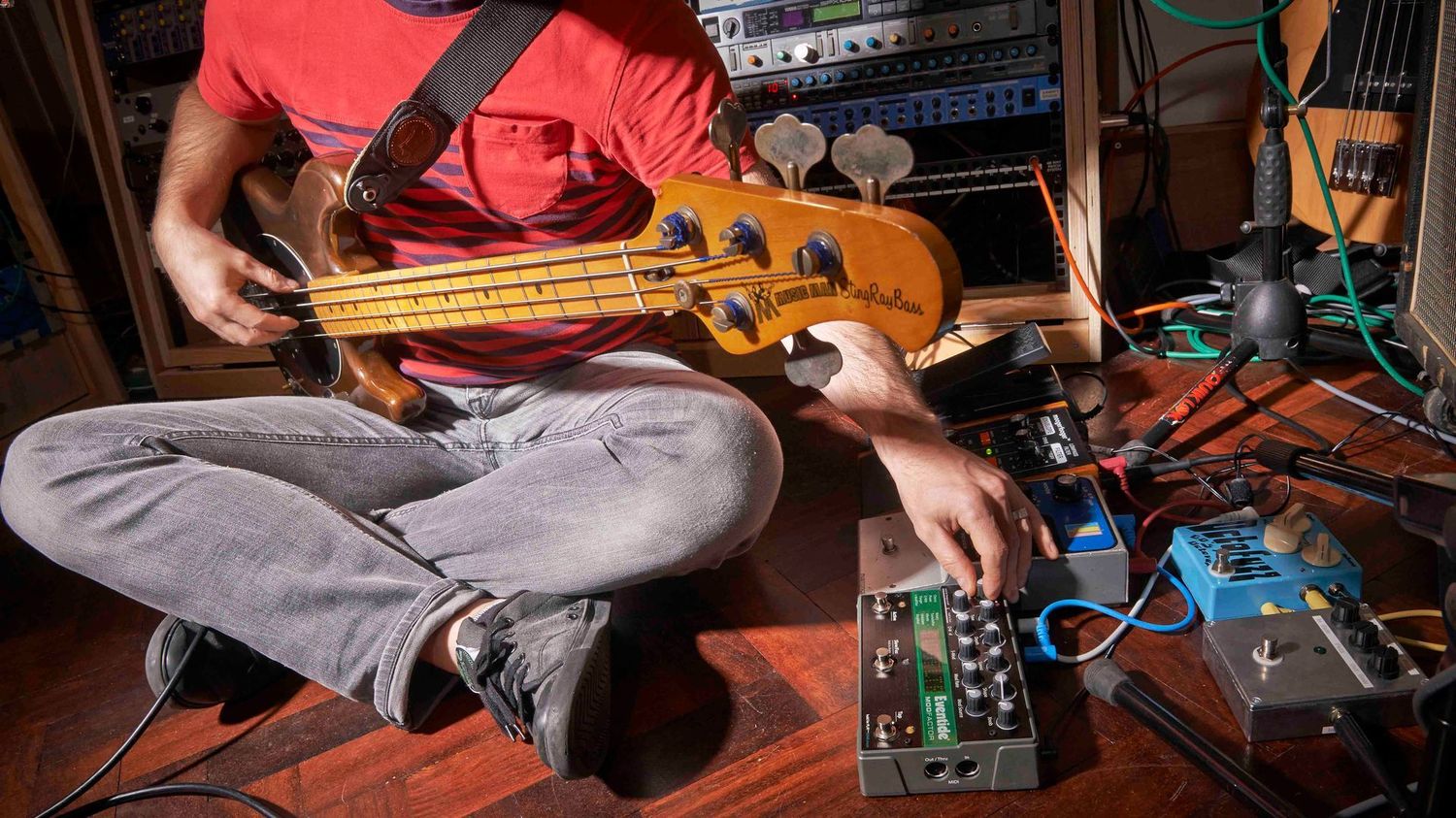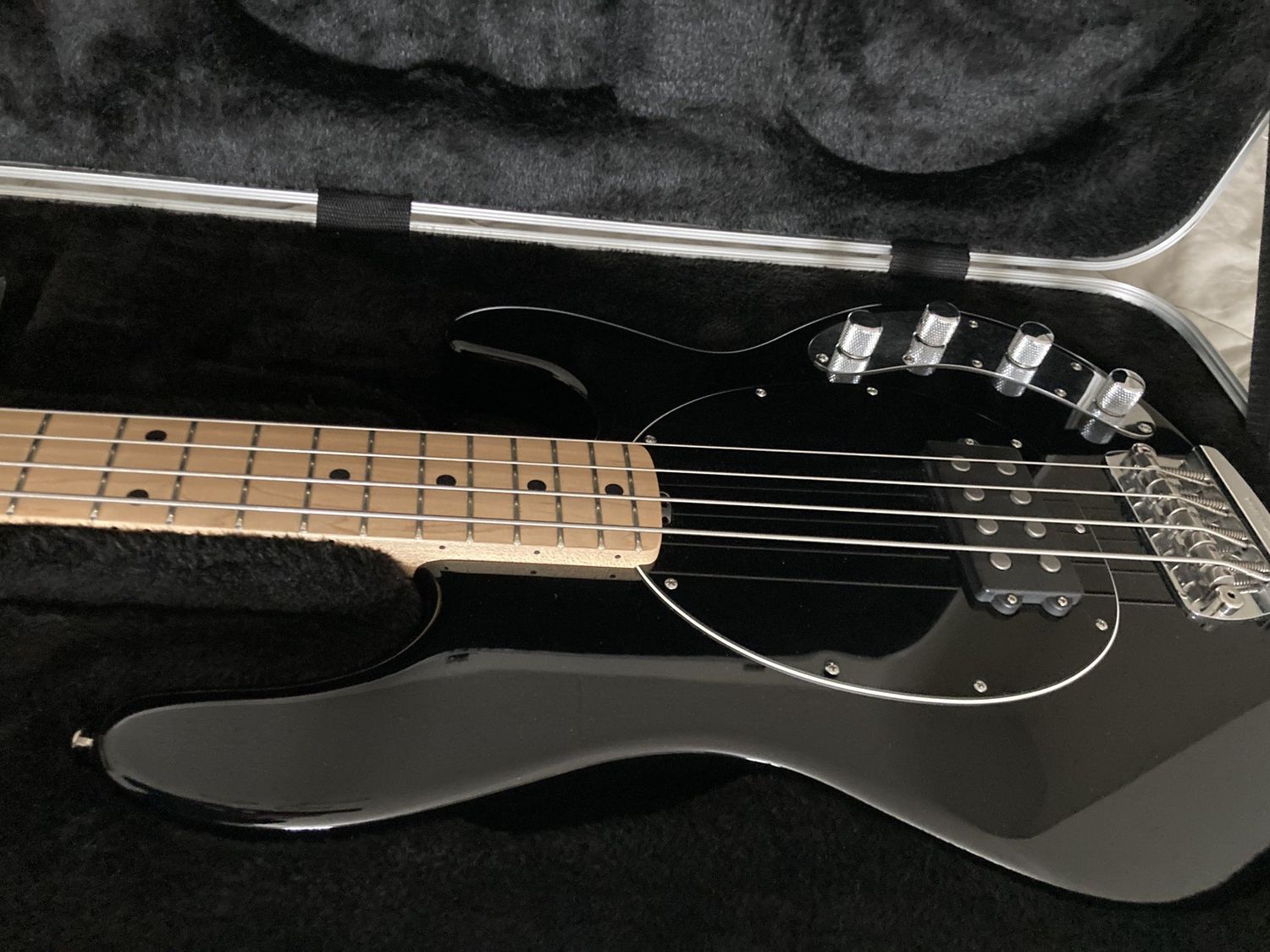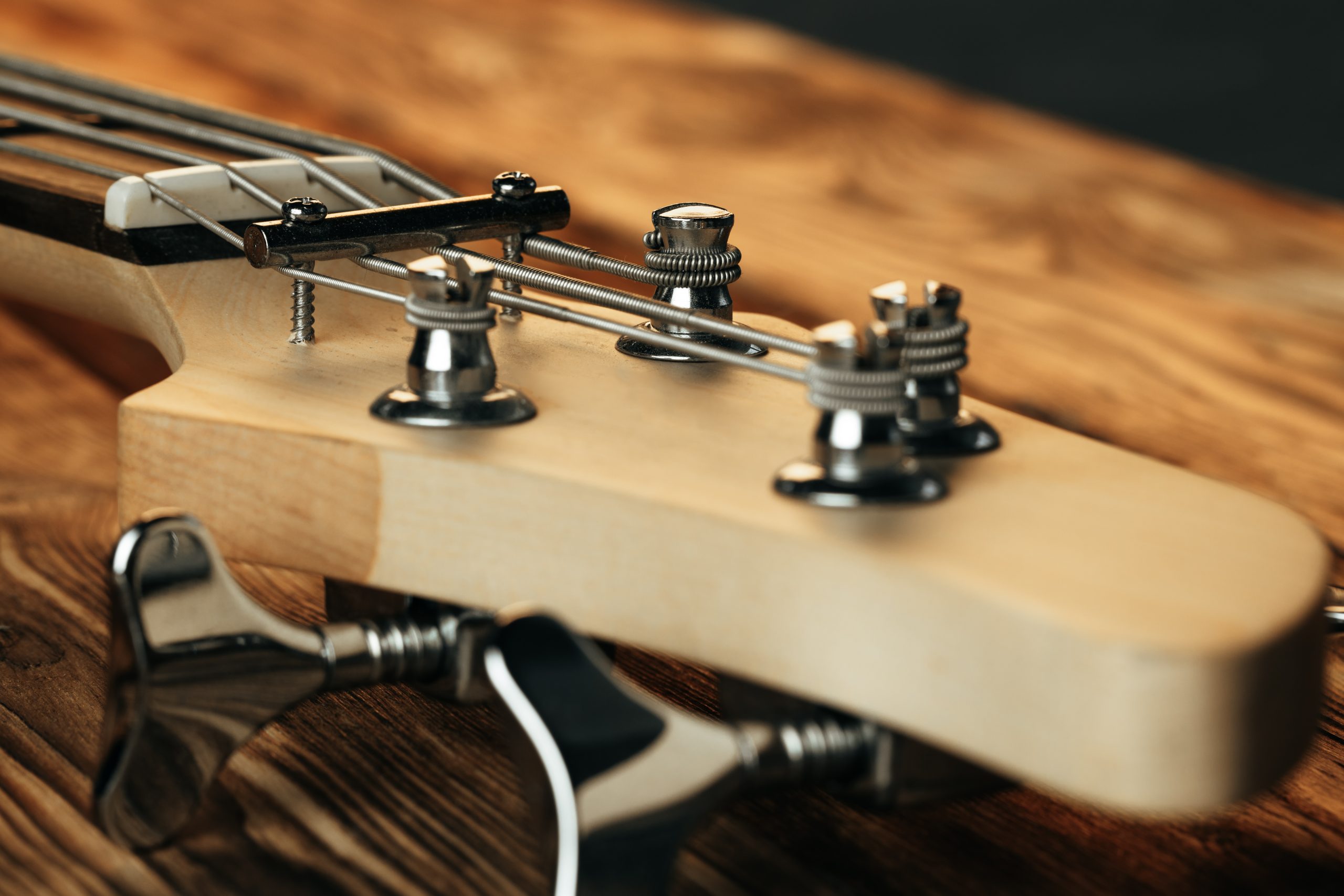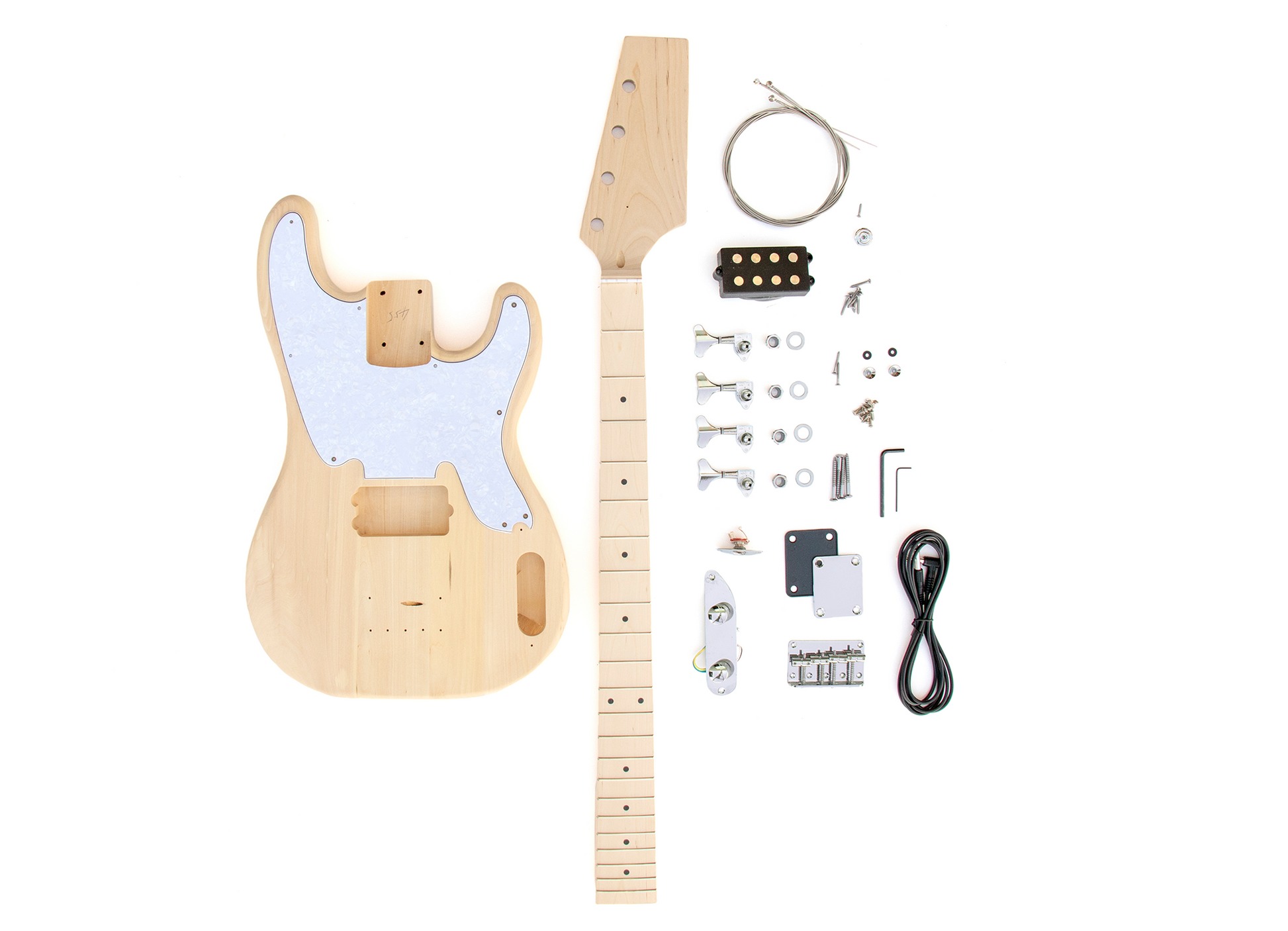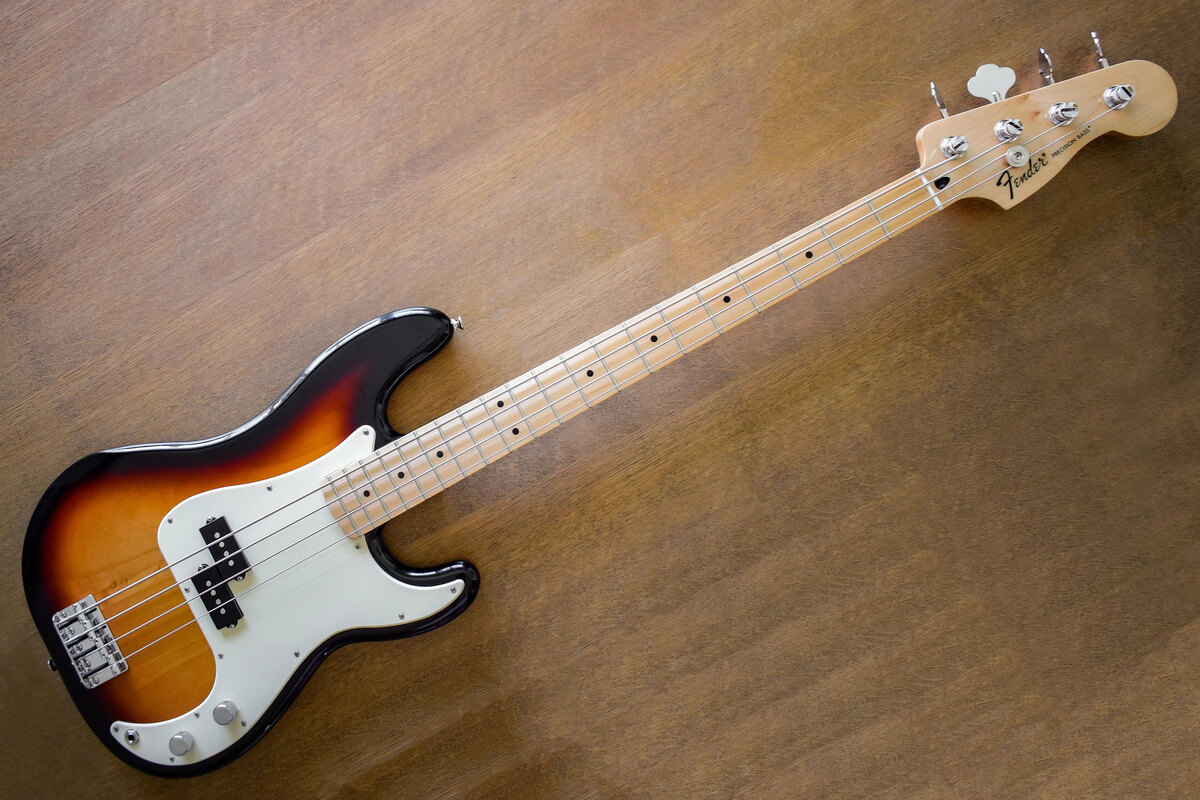Home>Instruments>Bass>How To Hold Bass Guitar


Bass
How To Hold Bass Guitar
Published: November 28, 2023
Learn how to hold a bass guitar properly to enhance your playing technique and prevent strain. Find step-by-step instructions and tips for holding your bass securely and comfortably.
(Many of the links in this article redirect to a specific reviewed product. Your purchase of these products through affiliate links helps to generate commission for AudioLover.com, at no extra cost. Learn more)
Table of Contents
- Introduction
- Understanding the Basics of Holding a Bass Guitar
- Sitting vs. Standing Position
- Left-Hand Placement on the Bass Neck
- Right-Hand Technique for Plucking or Picking
- Finding a Comfortable Strap Length
- Proper Body Posture and Ergonomics
- Adjusting the Bass Guitar to fit Your Body
- Tips for Maintaining a Stable and Secure Grip
- Conclusion
Introduction
When it comes to playing the bass guitar, mastering the art of holding the instrument is crucial for both comfort and technique. The way you hold the bass guitar directly affects your ability to play with precision, ease, and control. Whether you’re a beginner or a seasoned bassist, understanding the proper technique for holding the bass guitar is paramount.
In this article, we will explore the fundamentals of holding a bass guitar to help you achieve optimal results. We will delve into the intricacies of left-hand and right-hand placement, discuss the advantages of sitting versus standing, and provide tips and techniques to ensure a comfortable and secure grip. By mastering these techniques, you will not only improve your playing ability but also reduce the risk of strain or injury.
So, whether you’re playing in the studio, on stage, or jamming with friends, let’s dive into the world of holding a bass guitar and take your playing to the next level.
Understanding the Basics of Holding a Bass Guitar
Before diving into the specific techniques for holding a bass guitar, it’s important to familiarize yourself with the different components of the instrument. The bass guitar consists of the body, neck, strings, and various hardware such as the pickups, bridge, and tuning pegs. Understanding how these components work together will help you better grasp the fundamentals of holding the instrument.
When holding a bass guitar, it’s essential to maintain a balanced and comfortable position. The weight distribution should be evenly spread across your body, allowing for easy maneuverability and reduced strain. Additionally, maintaining a relaxed yet stable posture will enable you to play with greater precision and control.
The left hand is responsible for fretting the strings on the bass neck. The thumb should be positioned behind the neck, providing support and stability. The fingertips should rest firmly on the strings, allowing for accurate note placement without muting adjacent strings.
On the other hand, the right hand is responsible for plucking or picking the strings. There are multiple techniques for this, including fingerstyle, using a pick, or a combination of both. Experiment with different techniques to find what feels most comfortable and suits your playing style.
Whether you choose to play in a sitting or standing position is entirely up to personal preference and the playing situation. Sitting can offer more stability and control, especially when practicing intricate bass lines or complex techniques. Standing, on the other hand, allows for greater mobility and engagement with the audience during live performances.
Understanding the basics of holding a bass guitar sets a solid foundation for further development. With this knowledge in mind, we can now delve into specific techniques and tips to optimize your playing experience and elevate your bass playing skills.
Sitting vs. Standing Position
When it comes to playing the bass guitar, one of the first decisions you’ll need to make is whether you prefer to play in a sitting or standing position. Both options have their advantages and it ultimately comes down to personal preference and the context in which you’re playing.
Playing the bass guitar in a sitting position offers several benefits. It provides a stable and secure base, allowing for greater control and accuracy when playing intricate basslines or complex techniques. Sitting also allows you to comfortably rest the bass on your leg, reducing fatigue during long practice sessions or performances.
When sitting, it’s important to choose a suitable chair or stool. Look for one that provides back support and allows you to maintain an upright and comfortable posture. Adjust the height of the chair so that your thighs are parallel to the ground and your feet are flat on the floor or on a footrest. Keep in mind that the angle of your knees should be slightly greater than 90 degrees to ensure proper blood circulation.
On the other hand, playing in a standing position offers a different set of advantages. Standing allows for greater mobility and engagement with the audience during live performances. It gives you the freedom to move around the stage and interact with your bandmates, creating a dynamic and visually engaging performance.
When playing bass guitar standing up, it’s important to use a strap that is comfortable and adjustable. The strap should be worn high enough so that the bass rests at a comfortable height on your body. Experiment with strap length until you find the position that feels most natural and comfortable for you.
Whether you choose to sit or stand while playing the bass guitar, it’s important to maintain proper posture. This includes keeping your back straight, shoulders relaxed, and wrists in a neutral position. Avoid slouching or hunching over the instrument as this can cause strain and discomfort in the long run.
Ultimately, the choice between sitting and standing while playing the bass guitar depends on your personal preferences, playing style, and the specific context in which you’re performing. Experiment with both positions and find what works best for you in terms of comfort, control, and stage presence.
Left-Hand Placement on the Bass Neck
The left hand plays a crucial role in playing the bass guitar, as it is responsible for fretting the strings on the neck. Proper left-hand placement is essential for accurate note placement and overall technique.
Start by placing your thumb behind the neck of the bass guitar. Position it roughly in the middle of the back of the neck, providing support and stability. You want to have a relaxed grip, with your thumb lightly pressing against the back of the neck. Avoid gripping too tightly, as this can cause unnecessary tension and hindrance in your playing.
Your fingertips should be placed just behind the fret you’re playing. This allows for clear and precise note articulation. Make sure to use the very tips of your fingers, as this will help reduce the chance of accidentally muting neighboring strings.
As you move up and down the neck, maintain a curved finger shape. This helps create space between your fingers and the strings, allowing for clean separation and avoiding unintentional string buzzing. Keep in mind that each finger should only be responsible for pressing down the string it’s assigned to, minimizing unnecessary finger movement and improving overall dexterity.
Practice shifting between different positions on the neck, sliding your hand smoothly and accurately. This will allow you to navigate the instrument with ease and precision, eliminating any awkward transitions between notes or chords.
In addition to proper finger placement, it’s crucial to maintain a relaxed and natural hand posture. Avoid bending your wrist excessively or contorting your fingers into uncomfortable positions. Aim for a neutral wrist alignment that allows for fluid movement and reduces the risk of injury.
Ultimately, finding the optimal left-hand placement on the bass neck comes with practice and experimentation. Each individual may have different hand sizes and finger lengths, so it’s essential to adapt and adjust accordingly to find what works best for you.
Right-Hand Technique for Plucking or Picking
The right hand is responsible for plucking or picking the strings on the bass guitar, and mastering the proper technique is essential for achieving a consistent and controlled sound.
There are different techniques for plucking the strings, and the most commonly used ones are fingerstyle and using a pick. Fingerstyle involves using your fingers – typically your index and middle finger, sometimes combined with the thumb – to pluck the strings individually. Using a pick, on the other hand, involves holding a flat plastic or metal pick and striking the strings with it.
When using fingerstyle, rest your thumb on the pickup or the string below the one you are playing. Curl your fingers slightly so that your fingertips are angled towards the strings. Begin by playing with your index finger, using a controlled motion to pluck the string. As you progress, you can incorporate your middle finger for alternate or simultaneous plucking patterns.
If you prefer to use a pick, hold it firmly between your thumb and index finger. Angle the pick towards the strings and strike them with a smooth and consistent motion. Experiment with different pick sizes and materials to find the one that suits your playing style and delivers the desired tone.
Regardless of the technique you choose, aim for a consistent attack and follow-through. Avoid excessive tension and build up muscle memory to execute the plucking or picking motion smoothly and effortlessly.
Another essential aspect of right-hand technique is muting unwanted strings. Use the side of your palm or fingers on your right hand to lightly touch the strings that are not being played. This helps prevent any unintended string vibrations or noise, resulting in a cleaner and more precise sound.
Remember to practice slowly at first, focusing on accuracy and control. Gradually increase the tempo as you become more comfortable with the technique. Incorporate exercises and basslines that emphasize both single-note playing and string skipping to build versatility and dexterity in your right hand.
Overall, developing the right-hand technique takes time, patience, and consistent practice. Take the time to experiment with different approaches and find the one that feels most comfortable and allows you to achieve the desired tone and playing style.
Finding a Comfortable Strap Length
The strap length you use when playing the bass guitar is crucial for finding a comfortable and ergonomic playing position. The right strap length not only ensures stability and control but also helps prevent strain and discomfort during long practice sessions or performances.
The first step in finding the right strap length is to stand up straight with the bass guitar hanging naturally at your side. Adjust the strap so that it rests at a comfortable height on your body. Ideally, the bass should be positioned in a way that allows your left hand to reach the fretboard without excessive stretching or strain.
Keep in mind that different playing styles may require different strap lengths. For example, if you prefer to play with your bass slung lower, similar to a rock or metal style, you may need a longer strap to accommodate this preference. On the other hand, if you prefer to play with the bass higher, closer to your body, a shorter strap may be more suitable.
Experiment with different strap lengths to find the one that feels most natural and comfortable for you. Pay attention to how your body feels when playing with different strap lengths. If you experience discomfort or strain in your neck, shoulders, or back, it may be an indication that the strap length needs adjustment.
Additionally, take into consideration your height, body shape, and playing posture. It’s important to find a strap length that allows for proper body alignment and reduces the risk of strain or injury in the long run.
When adjusting the strap length, ensure that it is securely fastened to the bass guitar. Check that the strap locks or buttons are properly installed and can support the weight of the instrument. This will prevent any accidental slips or falls during play.
Once you have found a comfortable strap length, practice playing in different positions, such as sitting or standing, to ensure that it still provides the desired comfort and stability. Make any necessary adjustments as needed.
A comfortable strap length not only enhances your playing experience but also promotes proper posture and ergonomics. Take the time to find the strap length that works best for you, and you’ll be able to play with ease and focus for extended periods of time.
Proper Body Posture and Ergonomics
In addition to holding the bass guitar correctly, maintaining proper body posture and ergonomics is vital for playing with ease, reducing strain, and maximizing your performance potential. Good posture not only enhances your playing technique but also minimizes the risk of musculoskeletal issues and discomfort.
Start by ensuring that your spine is aligned and upright. Avoid slouching or hunching your shoulders forward, as this can lead to tension and strain in your back, shoulders, and neck. Instead, keep your shoulders relaxed and your chest slightly lifted. Imagine a thread pulling you up from the top of your head, elongating your spine and maintaining good posture.
While sitting, position yourself towards the front edge of the chair or stool, keeping your feet flat on the ground or on a footrest. This allows for balanced weight distribution and helps you maintain stability as you play. Avoid crossing your legs or sitting with your legs crossed, as this can lead to posture imbalances.
When standing, distribute your weight evenly between both feet. Keep your legs slightly bent and avoid locking your knees, as this can restrict blood circulation and cause discomfort over time. Engage your core muscles to provide stability and support to your spine.
Another aspect of proper body posture is the position of your arms and hands. Your arms should be relaxed and positioned comfortably in front of you. Avoid tensing your shoulders or lifting them close to your ears. Keep your elbows slightly bent and your wrists in a neutral, straight position.
Additionally, consider the height and angle of your bass guitar. When sitting, the bass should rest comfortably on your leg, at a height that allows your left hand to reach the frets without strain. Adjust the instrument’s position using a strap or by sitting on a support to elevate your leg if needed.
When standing, ensure that the bass is positioned at a comfortable height. Experiment with different strap lengths and positions until you find the one that allows for easy access to the strings and frets without having to strain your wrist or shoulder.
Taking regular breaks during practice sessions or performances is also essential for maintaining good body posture and preventing fatigue. Stand up, stretch, and move around to release tension and promote blood circulation.
Overall, maintaining proper body posture and ergonomics when playing the bass guitar is crucial for long-term health and performance. By adopting these habits and aligning your body in a balanced and relaxed manner, you’ll be able to play with greater comfort, precision, and endurance.
Adjusting the Bass Guitar to fit Your Body
Every bassist is unique, and it’s important to adjust the bass guitar to fit your body and playing style. Making proper adjustments ensures comfort, optimal playing technique, and reduces the risk of strain or injury. Here are some key areas to consider when customizing your bass guitar setup.
The first adjustment to consider is the neck relief, which refers to the slight curvature of the bass guitar neck. This adjustment affects how the strings vibrate and the overall playability of the instrument. You can make changes to the neck relief by adjusting the truss rod, located inside the neck. If the neck is too concave, the strings may buzz against the frets. If it is too convex, the strings may be higher off the fretboard, making them harder to press down. Finding the right balance allows for comfortable and smooth playing.
The next adjustment to consider is the string height or action. This refers to the distance between the strings and the fretboard. Higher action provides more room for the strings to vibrate and can reduce buzzing, but it requires more finger strength to press down the strings. Lower action makes it easier to fret the strings, but may increase the likelihood of buzzing. Adjusting the action can be done at the bridge or saddle of the bass guitar. Experiment with different heights to find what feels most comfortable for you.
Another important adjustment is the intonation. Intonation ensures that each note played on different frets is in tune. You can modify the intonation by adjusting the individual saddle positions. Using a guitar tuner, check the tuning on the open strings and at the octave on various frets. If the fretted notes are sharp or flat, make adjustments to the saddle positions until the intonation is accurate.
An often overlooked adjustment is the nut height, or the slots where the strings rest near the headstock. Proper nut height ensures that the strings are not too high or too low, providing a comfortable playing experience and reducing fret buzz. If the nut slots are too high, consider having a professional luthier file them down. If they are too low, a new nut may be necessary.
Additionally, consider the weight distribution of the bass guitar. Some basses can be quite heavy, and playing for extended periods can lead to strain on your back and shoulders. Consider using a padded strap or investing in a lighter bass if necessary. You can also experiment with strap placement and length to find a comfortable balance that promotes good posture and prevents neck and shoulder strain.
Lastly, personal preferences such as adding strap locks, customizing the electronics, or adjusting pickup height can further enhance your playing experience. These adjustments can be tailored to your specific sound preferences and playing style.
Remember, it’s important to make adjustments gradually and spend time getting familiar with each change before making further modifications. If you’re unsure about any adjustments, it’s always a good idea to seek advice from a professional or a knowledgeable bass technician.
By taking the time to adjust your bass guitar to fit your body and playing style, you’ll create a more personalized and comfortable playing experience, allowing you to perform at your best.
Tips for Maintaining a Stable and Secure Grip
Having a stable and secure grip on the bass guitar is essential for playing with control, accuracy, and comfort. A proper grip ensures that the instrument stays in place and minimizes the risk of dropping or losing control of the bass. Here are some tips to help you maintain a stable and secure grip:
1. Find the right balance: Position your fretting hand and picking hand so that they work together to support the bass. Distribute the weight of the instrument evenly across your body, whether you’re sitting or standing, to minimize strain and maintain control.
2. Use the right amount of pressure: While it’s important to have a secure hold on the bass, avoid excessive squeezing or gripping. Applying too much pressure can inhibit your playing and cause unnecessary tension in your hands, wrists, and arms. Find the right balance where you can maintain control without straining.
3. Relax your hands and wrists: Keep your hands and wrists relaxed to allow for fluid movement and facilitate efficient playing. Avoid tensing up or holding unnecessary tension in your muscles. Relaxation in your hands and wrists will improve your dexterity and precision.
4. Utilize proper thumb placement: Place your thumb behind the neck of the bass guitar, providing support and stability. Avoid pressing too hard or wrapping your thumb over the top of the neck, as this can limit your finger movement and hinder your playing technique.
5. Incorporate finger anchoring: To maintain stability while playing, utilize finger anchoring techniques. This involves lightly resting one or more of your non-playing fingers on the bass strings or body. This technique can provide additional stability and control, particularly during complex or fast-paced passages.
6. Experiment with different pick grips: If you use a pick, experiment with different pick grips to find the one that feels most comfortable and secure in your hand. Whether you prefer holding the pick with a firm grip or a looser hold, find the grip that allows you to strike the strings confidently and with precision.
7. Strap positioning: Adjust the length and position of your strap to find a comfortable and secure position that allows for ease of play. The strap should ensure that the bass guitar sits at a comfortable height that suits your physique and playing style.
8. Practice with different hand positions: Explore different hand positions and techniques to find what works best for you. Try variations of thumb placement, finger positions, and wrist angles to discover the most stable and comfortable grip for your playing style.
Remember, maintaining a stable and secure grip on the bass guitar is essential for fluid and confident playing. By implementing these tips and practicing regularly, you’ll develop a strong grip that enhances your playing technique and allows you to fully express yourself through the instrument.
Conclusion
Mastering the art of holding the bass guitar is crucial for any bassist looking to develop their skills and play with comfort and control. By understanding the basics of holding the instrument, you lay a solid foundation for your playing journey.
From sitting versus standing, to left-hand placement on the bass neck, to right-hand technique for plucking or picking, each aspect plays a significant role in your ability to express yourself through the instrument. Additionally, finding a comfortable strap length, maintaining proper body posture and ergonomics, adjusting the bass guitar to fit your body, and developing a stable grip all contribute to a seamless and enjoyable playing experience.
Remember, the key is to find the techniques and adjustments that work best for you. Every individual is unique, and what feels comfortable and natural for one person may not necessarily work for another. It’s essential to experiment, listen to your body, and make adjustments accordingly.
By prioritizing proper technique and comfort, you not only improve your playing ability but also reduce the risk of strain or injury. Take the time to practice, refine your techniques, and seek guidance from experienced players or instructors to continue developing your skills.
So, whether you’re a beginner starting your bass guitar journey or an experienced bassist looking to enhance your technique, implementing the knowledge and techniques covered in this article will help you hold the bass guitar with confidence, play with precision, and unlock the full potential of your musical expression.
Get ready to dive into the world of bass playing, unleash your creativity, and make some groovy basslines that will captivate audiences and breathe life into your music!

